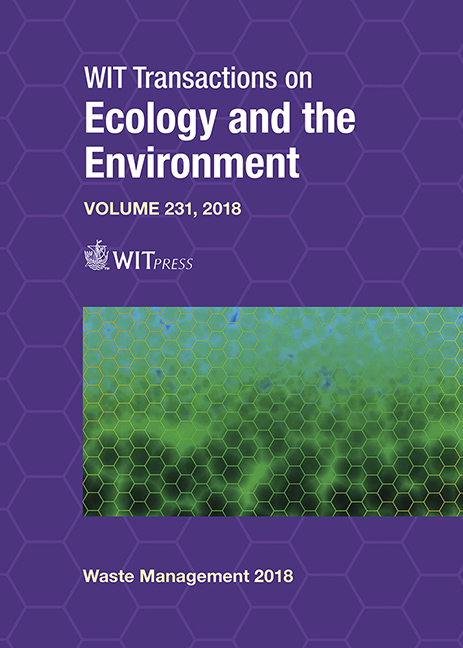RECYCLING POTENTIAL OF TEXTILE SOLID WASTE
Price
Free (open access)
Transaction
Volume
231
Pages
12
Page Range
125 - 136
Published
2019
Paper DOI
10.2495/WM180121
Copyright
WIT Press
Author(s)
MOHAMMAD FAHIM HASAN, NOWRIN MOW, MOHAMMAD RAKIBUL ALAM, SARDAR MOHAMMAD ABIR HASAN, ROWSHAN MAMTAZ
Abstract
With increasing production of textile products, textile industries (TIs) are generating a considerable amount of liquid and solid wastes which bring in many adverse impacts on the environment such as landfill occupation, contamination of air, soil, surface water, and groundwater. In Bangladesh, while prioritizing the disposal and management of textile liquid wastes, the necessity of management of textile solid wastes (TSWs) are often neglected. TSW is generated in a considerable amount but no proper management or disposal system is followed by the industries. An attempt has been made in this study to find a sustainable disposal option for TSW. The experiments were conducted throughout 2016. This research is concerned with a particular type of solid waste, very dusty in composition, generated from slitting, brushing and sueding machine in the dyeing unit of the composite TI. Using this particular type of TSW, papermaking was attempted following manual procedures. TSW at ten different ratios were added to scrap abandoned paper mixture (paper : waste = 1 : 0.25, 1 : 0.5, 1 : 0.75, 1 : 1, 1 : 1.5, 1 : 2, 1 : 2.25, 1 : 2.5, 1 : 2.75, 1 : 3, etc.) to produce papers. A pulp consistency test and different tests on produced paper e.g. basis weight, bulk, and density, book bulk, thickness, hygroexpansivity, formation, moisture, and finish were conducted according to Technical Association of the Pulp and Paper Industry (TAPPI) methods and ISO standards were followed to determine the quality of pulp and type of papers. The result was promising and showed a high potential for the use of TSW in the papermaking industry. Following the test results found in this research it can be said that the solid waste can be efficiently used mainly for making blotting paper, tissue, official or business paper, and paperboard, etc. Further research with a large amount of sample from different industries along with high-end equipment may disclose more information about the recycling extent of this TSW.
Keywords
contamination, papermaking, recycling, sustainable alternative, textile solid waste





